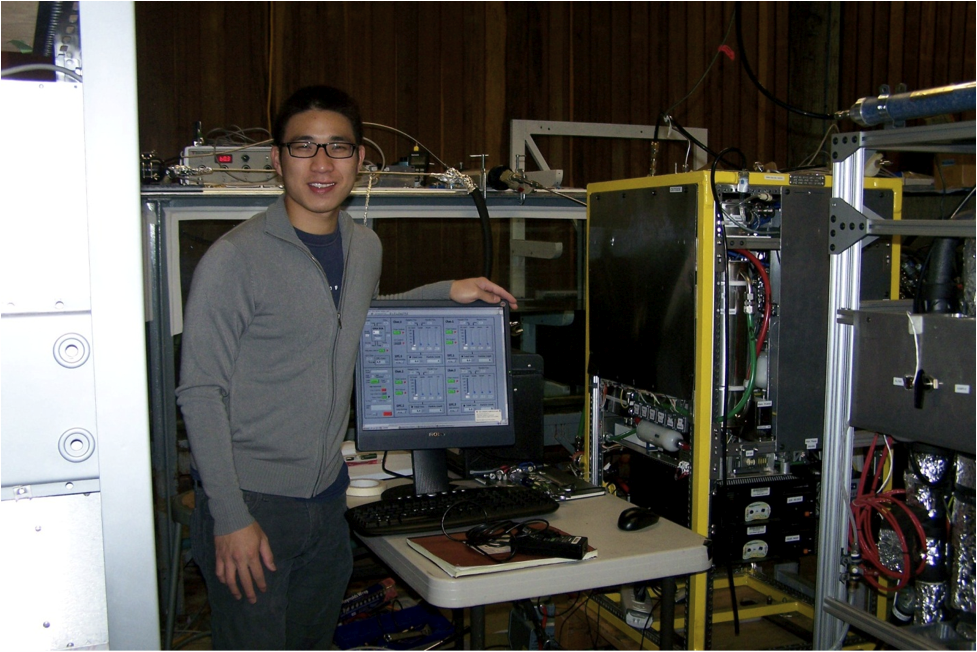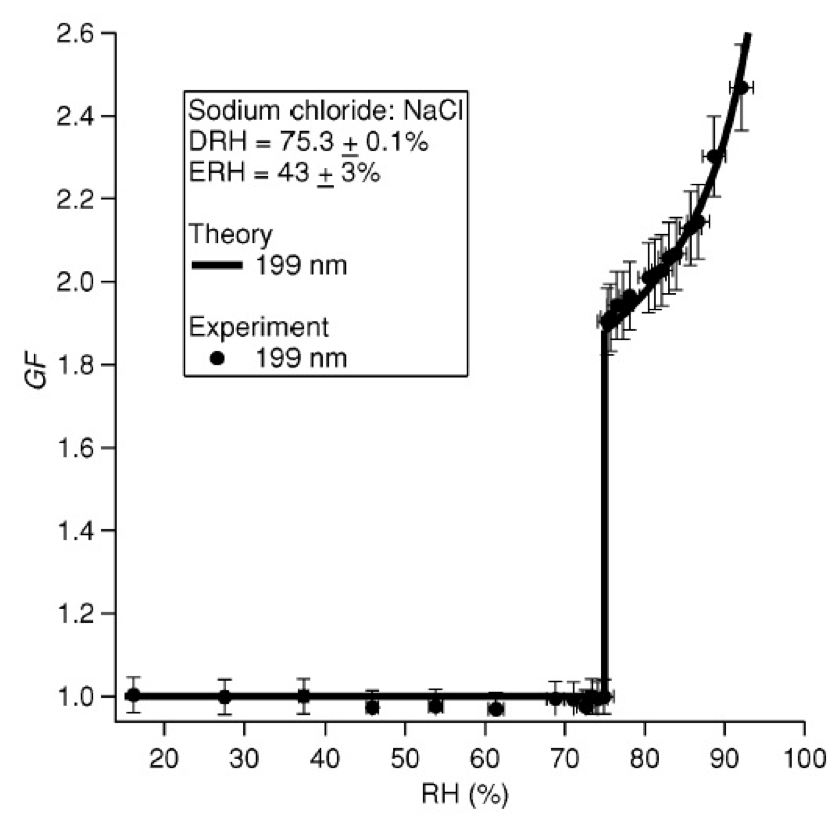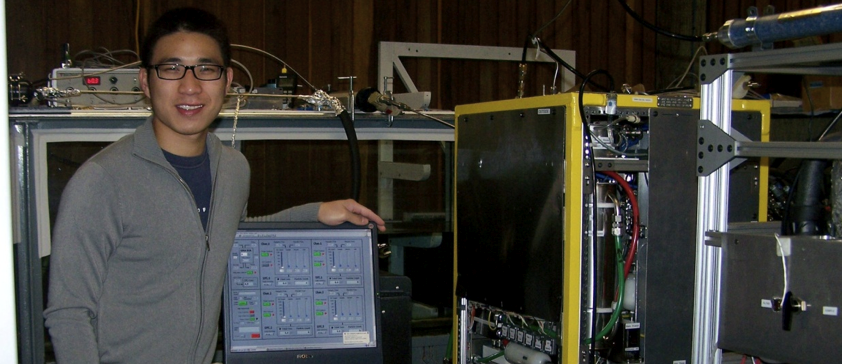
The author poses with the DASH-SP, which measures particle growth factors at different relative humidities in parallel.
I’m a second-year graduate student on my first field mission and this experience has definitely made me realize how intense the CAICE “Intensive” mission is! I’m in charge of operating the Differential Aerosol Sizing and Hygroscopicity Spectrometer Probe (DASH-SP). The DASH-SP selects aerosol particles by size, splits the aerosol particles into several different channels, and exposes each channel to a different relative humidity. As a result of the humidification, the particles grow due to water uptake onto the particles, and their sizes are measured when they leave the channel. In summary, same-size particles go in, different-size particles come out (due to different relative humidities). The ratio between the size coming out after humidification and the size going in is called the growth factor. Growth factors can tell us how hydrophilic or hydrophobic particles are.
We’re interested in learning more about the properties of sea spray aerosol particles, especially when they are chemically affected by biology. Does the biology’s chemical influence make the sea spray aerosol particles more or less hydrophobic? As a result, do sea spray aerosol particles grow a lot or a little when the air is humid? The answer to these questions can help us in answering other questions about sea spray aerosol particles: How big do they get? How long do they stay in the atmosphere? How much light do they scatter? What does this mean for cloud formation? Ultimately, what does this mean for the Earth’s climate? Are there any feedbacks in the climate from our findings?
 I spent the previous month learning about the operation and troubleshooting of the DASH-SP. My research mentor and I had repaired and calibrated the instrument so that it was in perfect condition for the CAICE Intensive mission. When I learned I was going on my first field mission without my research mentor, I was afraid – very afraid! My only source of solace was that the instrument was in tip-top shape and that the field mission only involved turning the DASH-SP on and off every few hours. Little did I know that Murphy’s Law would be in full force for the DASH-SP – after a brief harrowing period of repair, the DASH-SP was back up and running again!
I spent the previous month learning about the operation and troubleshooting of the DASH-SP. My research mentor and I had repaired and calibrated the instrument so that it was in perfect condition for the CAICE Intensive mission. When I learned I was going on my first field mission without my research mentor, I was afraid – very afraid! My only source of solace was that the instrument was in tip-top shape and that the field mission only involved turning the DASH-SP on and off every few hours. Little did I know that Murphy’s Law would be in full force for the DASH-SP – after a brief harrowing period of repair, the DASH-SP was back up and running again!
I’m very excited about what my measurements reveal about how sea spray aerosol particles, especially when chemically affected by biology, grow in response to different relative humidities. The true-to-life wave flume and the questions posed by the mission make it unique and will yield important insights on sea spray aerosol.
Wilton Mui, Graduate Student, Environmental Science and Engineering, Seinfeld Research Group, Caltech


